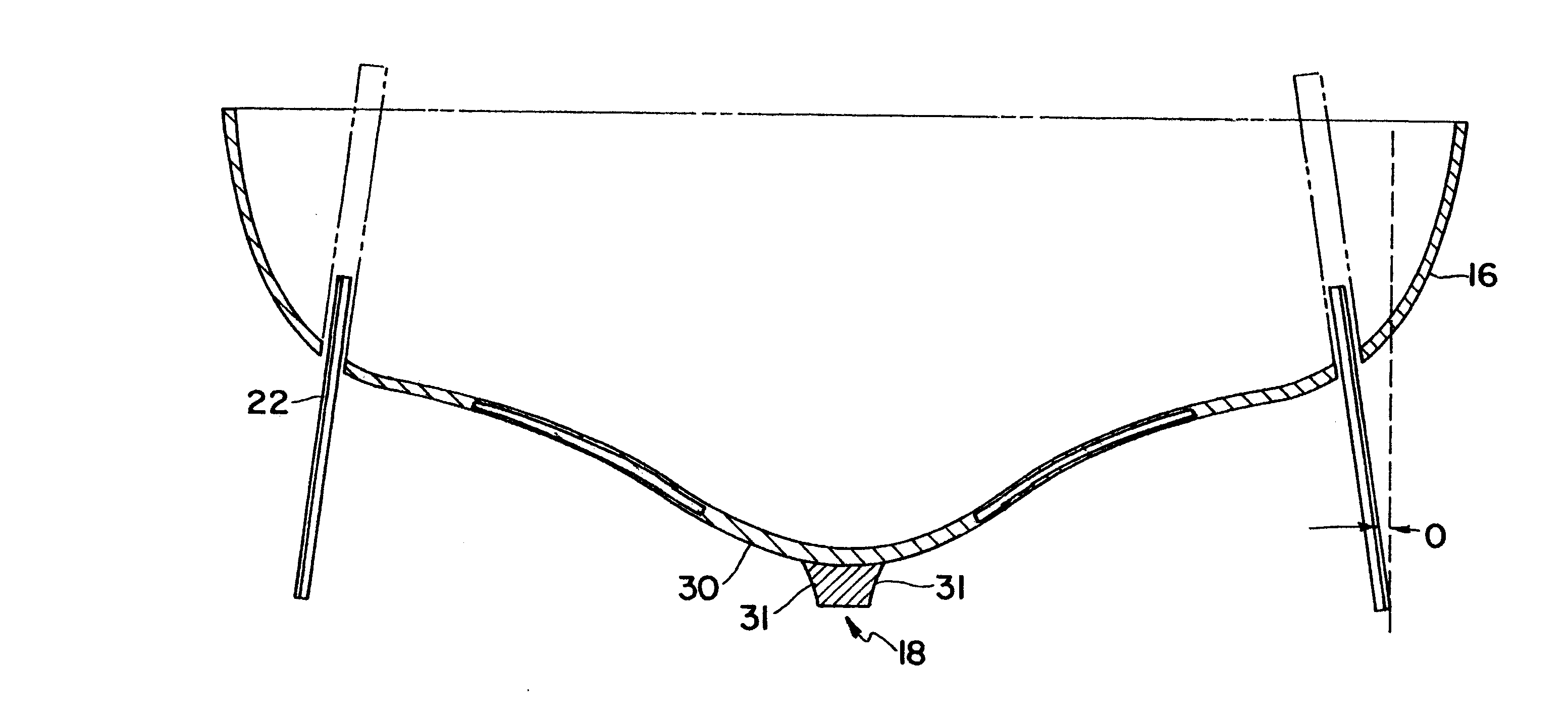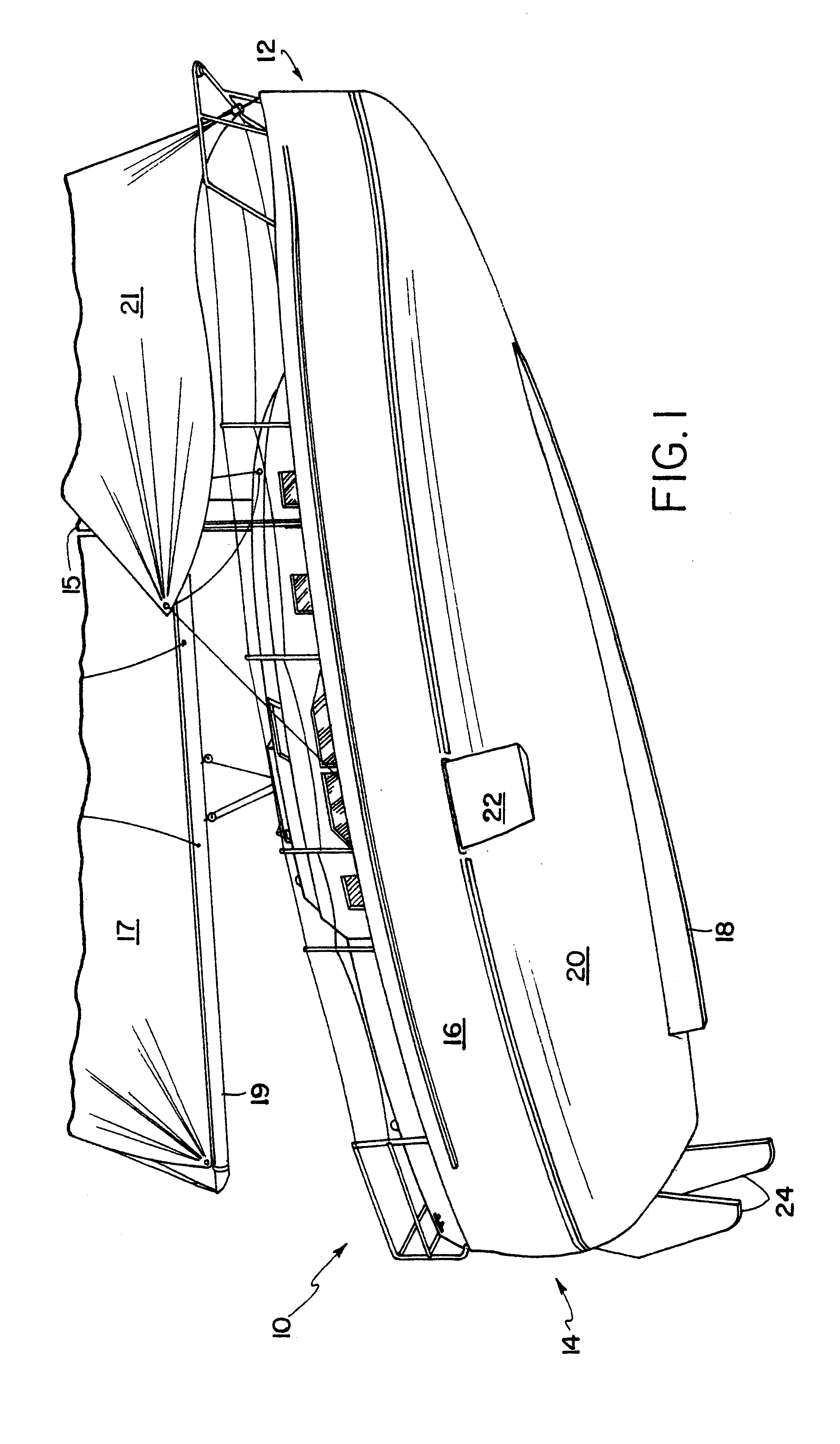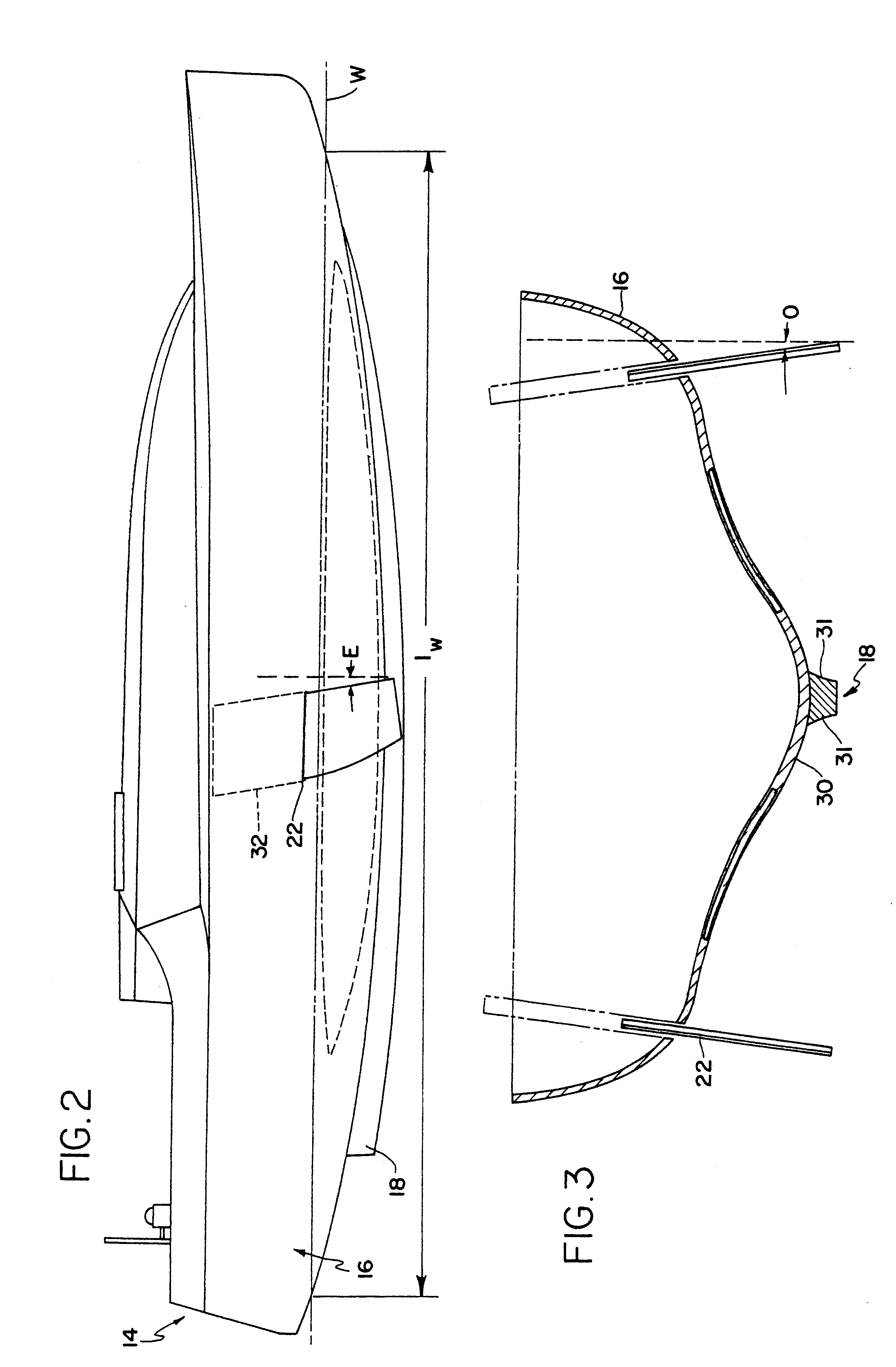Sailboat for sailing in shallow water
a sailboat and shallow water technology, applied in the direction of marine propulsion, special-purpose vessels, vessel construction, etc., can solve the problems of slipping sideways, boat performance, and inability to sail well on the retractable board
- Summary
- Abstract
- Description
- Claims
- Application Information
AI Technical Summary
Problems solved by technology
Method used
Image
Examples
Embodiment Construction
A sailboat 10 which is capable of sailing in shallow water, is illustrated in FIGS. 1-14. As used herein, the term "shallow" or "shoal" water refers to water generally 3 feet or less in depth for boats 35 feet or less in length. However, for boats over 35 feet, shallow water refers to 1 inch of water for each foot in length of the boat measured along the waterline. Also, as used herein, "performance" sailing refers to sailing at all points of wind without significant adverse effects such as increased drag or side slippage. The term "overall draft" or "sailing draft" refers to the depth of the boat from the waterline down to the deepest part of the boat, including appendages (such as dagger boards and rudders) in their fully lowered or extended position. The terms "windward", "leeward", "fore", "aft", "bow", "stern", "heel", "stations", etc., are all used in their conventional sense as sailing terms well-known to those of skill in the art. When the boat is static, the waterline "W" i...
PUM
 Login to View More
Login to View More Abstract
Description
Claims
Application Information
 Login to View More
Login to View More - R&D
- Intellectual Property
- Life Sciences
- Materials
- Tech Scout
- Unparalleled Data Quality
- Higher Quality Content
- 60% Fewer Hallucinations
Browse by: Latest US Patents, China's latest patents, Technical Efficacy Thesaurus, Application Domain, Technology Topic, Popular Technical Reports.
© 2025 PatSnap. All rights reserved.Legal|Privacy policy|Modern Slavery Act Transparency Statement|Sitemap|About US| Contact US: help@patsnap.com



